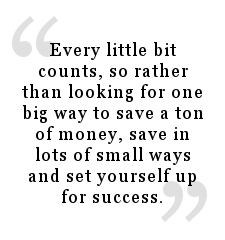 |
| Student Loan |
Some call it the Student Loan Bubble — I call it crazy. And what better time to discuss student debt insanity than now, as countless soon-to-be graduates prepare to slip on their caps and gowns? An estimated 1.8 million students are graduating this year, many with degrees that perhaps aren’t worth a damn when it comes to actually get a job. Nevertheless, many of them will soon be paying back the tens or hundreds of thousands of dollars they borrowed to get those nice degrees, and I wonder how many will regret the decision to spend what they spent as they see their interest compound and principals skyrocket through cycles of deferment and forbearance. The college experience can be an amazing one, but is it really worth the cost? (And I’m not just talking about tuition.)
To get at the heart of this question, I recently commissioned a poll that asked adults of all ages about student loans. We asked how much student debt is okay, and how much is too much. One in five senior citizens and almost a quarter of adults between the ages of 35 to 49 agree that $20,000 to $50,000 in student loan debt is too much to borrow. Maybe that’s because they are in the age range of folks in a position to hire young people. Maybe it’s because the college didn’t use to cost so much. At any rate, people of college age, between 18 and 24, disagreed with the old folks; only 16 percent said graduating with that much debt is too much.
Many respondents believe there should be no limits at all. Among recent graduates, 22 percent agreed that students “should borrow as much as they need,” and “no amount is too much.” Baby boomers and seniors overwhelmingly disagree — only 7.9 percent of people aged 65 and up agreed that college students should borrow to the hilt. It seems the marketing of “Don’t Worry, Pay Later” has been a success — at least in younger demographics.
Clearly, many college students and recent grads take a more cavalier approach to student loans than their parents and grandparents. Research shows that many even consider high debt loads to be empowering and give them higher self-esteem. Conversely, young adults
—folks who have labored a few years into the real world — are less enthusiastic about borrowing so much; 73 percent say they owe more in student debt than they can manage.
“It’s not surprising that the generation that has to borrow a lot more for college believes it’s a necessity for others,” says Lauren Asher, president of the Institute for College Access and Success. “There’s been a big structural shift in how Americans pay for college, and the cost that students and families have to pay has increased.”
Young adults back their beliefs with more student debt. Just shy of half the respondents — 46.8 percent — between ages 18 and 24 said they have borrowed money to finance a college education. That’s the highest level of any age group. About 40 percent of adults aged 25 to 34 took on student loans, and under a quarter of all Baby Boomers did.
Loan totals are going up, too. Young adults reported a median debt of $38,100. That blew all other age groups out of the water. Middle-aged adults said they borrowed about $25,000 for college. The average college student has about $26,600 in debt, according to the Project on Student Debt, a 40-percent increase since 2002, and it’s time to find a way to start paying it down.
Today’s bad economic climate makes this pretty scary. The unemployment rate for Americans dipped to 7.1 percent in April. But joblessness among adults ages 20 to 24 remains mired at 12.5 percent, according to the Bureau of Labor Statistics. When you add in all the college grads working as baristas, waiters and other jobs that don’t require a degree, about 1.5 million bachelor’s degree holders — 53.6 percent — under age 25 are unemployed or underemployed, according to a study by the Associated Press.
High college debt mixed with low job opportunities equal economic fallout. And if you are wondering why young people are taking on the debt: high school graduates face a jobless rate twice that of college grads.
Signs of stress are already showing. More than half of all student loans are now delinquent or in deferral. According to the latest report from the U.S. Department of Education, over 13 percent of graduates default on their loans within three years of leaving college.
So, riddle me this: how do you buy a car, a home, or start a family (i.e. put the “consumer” into our “consumer economy”), if you can’t even afford a monthly student loan payment? You already know the answer. And so the economy will continue to stagnate, with demand flagging along with everything else.
As President Obama and Congress dither over federal Stafford loan rates possibly doubling to 6.8 percent, they have done nothing substantive about the real problem: The Great Recession and a competitive technology job market that colleges and college lenders aren’t catering to. This is the problem that has already killed millions of middle-class jobs that are never coming back. And until our lawmakers get busy on a solution, it’s only going to get worse.
The new economic age of big, portable, sharable data is here, yet many American students today are still preparing for the economy of the past. Rather than slashing investment in higher education and scientific research, we should be adding to it. We should also be seeking innovative ways to keep a lid on tuition increases while simultaneously working to help millions of American graduates win the kinds of good-paying jobs they’ll need to pay their loans.














